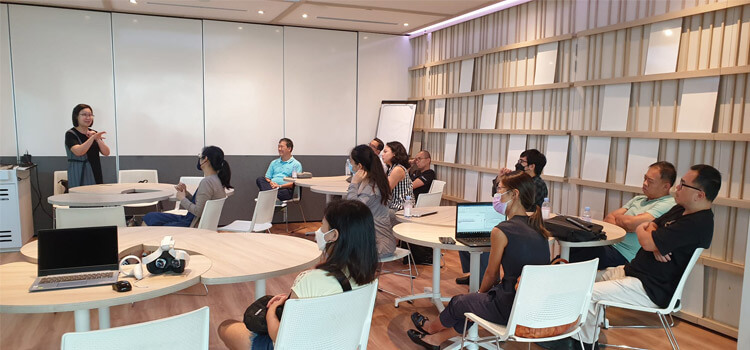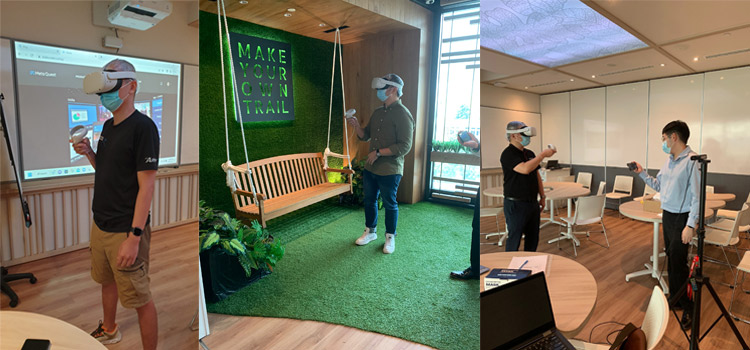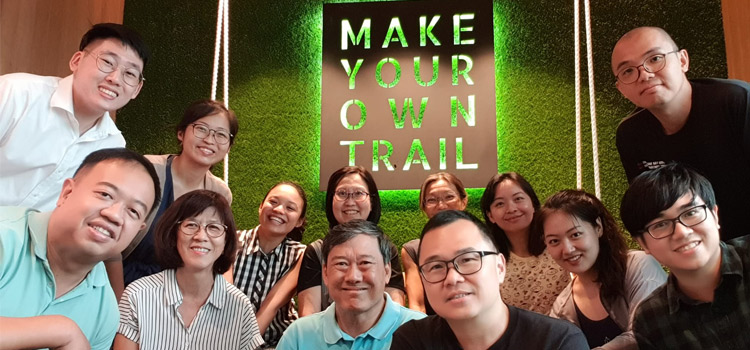About the study
To explore the effectiveness of VR-augmented feedback for effective oral presentation



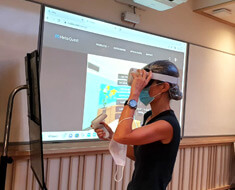
Introduction
In any training situation, the instructors’ competence in speaking to the audience will be crucial to the effectiveness of a training course. However, many instructors have limited competencies to deliver an effective oral presentation to the audience, the problem comes from eye contact, gesture and verbal fluency. One way to develop presenters’ presentation skills is to give them feedback based on their training videos, but such feedback given by human expert is dependent on the limited angles, some details of facial changes and eye contact cannot be synchronously analyzed. Virtual Reality (VR) may potentially help to address the oral speaking competence problem. Research has shown that VR can imitate an interactive and real classroom environment by providing virtual audience and generating immediate and data-based feedback for presenters’ oral presentation (Van Ginkel et al., 2020; Van Ginkel et al., 2019). Studies on the use of VR for enhancing training effectiveness are rare, and the effect also remains questionable. This study will design the VR-augmented feedback environment to investigate the effectiveness of VR-augmented feedback in training.
Research Objectives
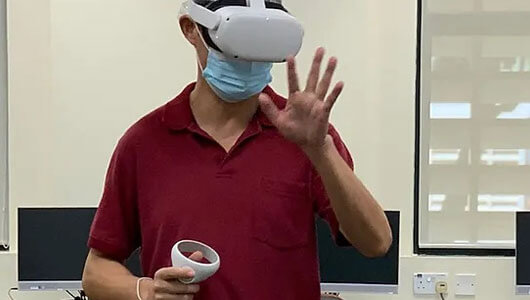
01
To develop the presenters' oral presentation skills for engaging the adult audience in a virtual training environment.

02
To investigate the effectiveness of the virtual reality-based environment in improving presenters’ oral presentation skills.
Methods
- Randomised control trial, single-blinded 2-group pretest and posttest design.
- Data collection was blinded to the group allocation (VR or Non-VR) of the participants.
- Participants were randomized to the intervention (with VR) and control groups.
- A set of 64 numbers was generated to determine the allocation of the intervention group. For every participant assigned to intervention group (also called VR group), there will also be one participant assigned to a non-intervention group (also called non-VR group).
- An online advertisement was sent out to institutions and organisations to recruit interested participants for 6 months.
- Participants will then be randomly assigned to two different groups: VR augmented-feedback environment and human experts’ feedback.
- For participants’ continuous improvements, every participant has three times to give presentations.
- Experts will also use developed rubrics to assess presenters’ final performance. The effectiveness of the VR training environment will be explored through comparison.
- All experiments were conducted in the computer lab in NIE.
- Participants were involved in a two-hour study held at an NIE computer lab. The session was split into 6 different stages.
- Participants were randomly split into 2 groups, VR and Non-VR group.
How the Experiment
was conducted
Studies on the use of VR for enhancing training effectiveness are rare, and the study on its effects remain to be a vast area for further exploration and analysis.
Get in touch
Email Us
Quek Choon Lang Gwendoline
choonlang.quek@nie.edu.sg
Call Us
+(65) 6790 3273
